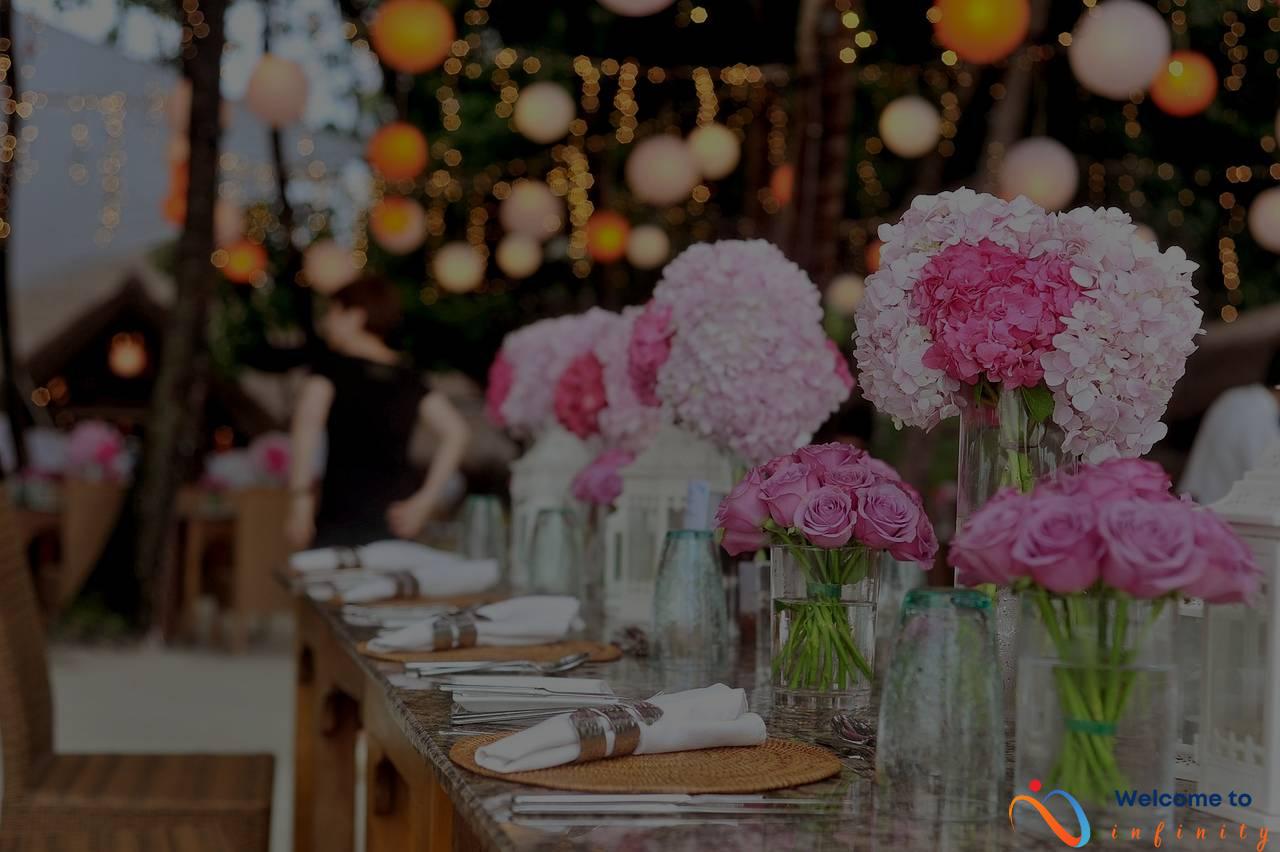If you're looking to bring a sense of tranquility and natural beauty to your home decor, then the art of bonsai may be just what you need. This ancient Japanese practice involves cultivating small-scale trees that are carefully shaped to resemble their full-sized counterparts. The result is a stunning natural element that can add depth, texture, and a sense of harmony to any space.
Learning to incorporate bonsai into your home decor is a fun and rewarding experience that can have a profound impact on your living space. Whether you're looking to create a calming atmosphere in your bedroom, or add an interesting conversation piece to your living room, bonsai can offer a unique and natural solution.
Getting started with bonsai is easy, and there are plenty of resources available to help you along the way. From selecting the right type of tree, to caring for it properly, to designing a perfect display piece, there's no shortage of things to learn and explore. And with each new bonsai, you'll be rewarded with a sense of accomplishment and peacefulness that only a natural element can provide.
What is Bonsai?
Bonsai is an ancient Japanese art form that involves cultivating miniature trees that mimic the shape and scale of full-sized trees. The word “bonsai” comes from the Japanese words “bon” (meaning a tray or pot) and “sai” (meaning to plant or cultivate). The practice of bonsai can be traced back over a thousand years to the Tang Dynasty in China, where miniature trees were grown and trained in pots as a form of garden art.
In Japan, bonsai became popular in the Kamakura period (1185-1333) and evolved into a highly refined art form during the Edo period (1603-1868). Bonsai masterpieces were created and exhibited during this time, and the art of bonsai truly blossomed. Today, bonsai is practiced all over the world and has evolved into a form of art that requires skill, patience, and dedication.
To create a bonsai tree, a young tree is carefully pruned, wired, and shaped to create the desired form. The roots of the tree are also pruned to fit into a small pot, which restricts the tree's growth and causes it to develop a small trunk and miniature branches and leaves. With proper care and maintenance, a bonsai tree can live for many years and become a work of living art.
- When selecting a bonsai tree, consider the type of tree and the style you wish to create.
- Choose a tree with a sturdy trunk and healthy roots.
- Consider the size of the tree and the pot it will be grown in, as both can affect the growth and development of the tree.
- Maintain your bonsai tree by pruning, wiring, and shaping it regularly to maintain its form and beauty.
- With patience and care, you can create a beautiful and unique work of art that will bring a touch of nature and serenity to your home or office.
Choosing the Right Bonsai Tree
Bonsai trees come in many different varieties and sizes, giving you plenty of options to choose a tree that fits your style and space. When selecting the right bonsai tree, pay attention to the type of tree, size, and maintenance considerations.
Consider the following tips for choosing the right bonsai tree:
- Type of Tree: Research different types of bonsai trees to determine which species suits your decorating style and level of maintenance. Some common bonsai tree types include Japanese maple, juniper, and ficus.
- size: Consider the space where you plan to place your bonsai tree and choose a size accordingly. Smaller trees work well in compact spaces, and larger trees can fill up empty corners or serve as the focal point of a room.
- Maintenance: Each type of bonsai tree has its own unique maintenance requirements, so ensure you select a tree that meets your time and expertise level. Factors to consider include pruning frequency, sunlight requirements, and soil type.
When buying a bonsai tree, look for one that has a well-developed root system, healthy foliage, and balanced branches. Freshly pruned bonsai trees may require extra attention in the first few weeks to ensure they adjust well to their new environment.
Remember, selecting the right bonsai tree will help ensure that it thrives in its new home and brings a natural, serene element to your Asian-inspired decor.
The Psychology of Bonsai
While bonsai trees are known for their visual appeal, they also have several benefits for the mind and body. The practice of tending a bonsai tree can have a therapeutic effect on practitioners, helping to promote mindfulness and reduce stress.
When caring for a bonsai tree, practitioners must pay close attention to the details, such as the tree's water and nutrient needs, pruning, wiring, and fertilization. This attention to detail can help to increase focus and enhance mindfulness.
In addition, the act of pruning and shaping a bonsai tree can be a relaxing and meditative practice. As practitioners carefully shape and train the tree, they can feel a sense of accomplishment and connection with nature.
Studies have shown that spending time with nature, such as tending a bonsai tree, can also help to reduce stress and anxiety. The presence of plants has been linked to lower blood pressure and improved mood.
Incorporating bonsai trees into your home or workspace can help to create a calming atmosphere and promote a sense of tranquility and balance.
Bonsai Care and Maintenance
If you want to keep your bonsai tree healthy and thriving, proper care and maintenance are crucial. Here are some tips on how to take care of your bonsai:
- Watering: Bonsai trees need to be watered regularly but should never be overwatered. The frequency of watering depends on the type of tree, the size of the pot, and the environment. To check if your bonsai tree needs watering, stick your finger about an inch into the soil. If it feels dry, it's time to water your tree. Use a watering can or a spray bottle to water your tree gently.
- Pruning: Pruning is essential to maintain the shape and health of your bonsai tree. Regular pruning helps to remove unhealthy branches, shape the tree, and promote growth. Use clean and sharp pruning shears to avoid damaging the tree.
- Repotting: Repotting is necessary to give your bonsai tree fresh soil, remove excess roots, and prevent root-bound conditions. Repotting should be done once every two years for young trees and once every three to five years for mature trees. The best time to repot your bonsai tree is in early spring before it begins to grow.
Proper care and maintenance of your bonsai tree take time and effort. However, with the right techniques and knowledge, you can enjoy the beauty and serenity of a healthy bonsai tree for years to come.
Designing with Bonsai Trees
The practice of bonsai isn't just restricted to outdoor gardens or Japanese tea gardens. You can incorporate these beautiful miniature plants into your home decor to add a natural and serene element. Bonsai trees come in various styles and sizes, making it easy to decorate any room according to your style. So, here are some ideas for incorporating bonsai trees into your home decor:
- The Minimalist Style: For a sleek, minimalist look, try placing a small bonsai tree on a windowsill or bookshelf. You can also pair it with other minimalist decor items, such as a simple vase or candle holder.
- The Zen Style: Incorporate bonsai trees into your zen garden decor, with rocks and sand that make for an additive calming and serene atmosphere.
- The Modern Style: Match your Bonsai with modern furniture and monochrome walls for an elegant and timeless space.
- The Traditional Style: Place a larger bonsai tree in your living or dining room as a centerpiece, especially when it ripens to the fall season. It brings a sense of grounding and comfort to the room.
If you want to create a more immersive experience, dedicate an entire corner in a room to a bonsai garden. You can add essential elements like stones, pebbles, and other natural items to your garden to enhance your space' atmosphere.
Bonsai trees are excellent for adding a natural and tranquil touch to any decor style. Not only are they visually appealing, but they also have a calming effect that helps reduce stress and increase mindfulness. So, whether you have a small corner or a larger area in your home, adding a bonsai tree to your decor is the perfect way to create a peaceful and serene atmosphere that resonates with you.
Bonsai Trees in the Office
Bringing the natural and calming presence of bonsai trees into your workspace can foster increased productivity and reduced stress. When it comes to choosing a bonsai tree for your office, compact and low-maintenance varieties are ideal. Consider selecting a tree with small leaves, such as the Chinese Elm or the Hawaiian Umbrella Tree, which can thrive under indoor lighting and don't require frequent watering.
Placement is also key when it comes to incorporating bonsai trees into your office. Ideal locations include near windows or on desks in a spot with ample sunlight. Additionally, you may want to consider grouping numerous trees together in order to create a calming and aesthetically pleasing bonsai garden in your office.
Bonsai trees in the office can aid in concentration and relaxation. As a result, they work well in home offices as well as traditional office spaces. Bringing a touch of nature to your workspace, courtesy of a bonsai tree, can do a lot to increase focus and motivation throughout the day.
Bonsai Trees in the Garden
If you're lucky enough to have a garden or outdoor space, you can take advantage of incorporating bonsai trees into your landscaping. Bonsai trees can add texture, color, and height to outdoor spaces, enhancing the natural beauty of your garden.
When considering incorporating bonsai trees into your garden, there are a few things to keep in mind. First, consider the size of your outdoor space and the amount of sunlight it receives. Different bonsai tree species have different sunlight requirements, so it is important to choose a tree that is suitable for your garden's lighting conditions. You should also consider the climate in your area, as different trees are better suited to different climates.
Another factor to consider when incorporating bonsai trees is the overall design of your garden. You can create a dedicated area for your bonsai trees, or you can incorporate them into existing landscaping. For example, you can create a bonsai tree pathway, or place a bonsai tree as a centerpiece in a flowerbed.
When designing with bonsai trees, it is important to remember that bonsai trees require special care and maintenance. Be sure to research the specific care requirements for your bonsai tree species to ensure that it remains healthy and vibrant in your outdoor space. With proper care, bonsai trees can flourish in the garden and add a natural, calming element to your outdoor landscapes.
- Choose bonsai trees that are suitable for your garden's lighting conditions and climate.
- Consider the overall design of your garden when incorporating bonsai trees.
- Research specific care requirements for your bonsai tree species.
Bonsai Culture and Community
The art and practice of bonsai has a rich culture and community around the world. Bonsai enthusiasts gather in clubs and societies to share their knowledge and passion for the art. These clubs organize events and exhibitions where members display their prized bonsai trees and share their techniques and experiences.
There are also many online resources available for the bonsai community. Websites and forums offer a wealth of information on bonsai care, design, and history. They also provide a platform for bonsai enthusiasts to connect with each other and share their work.
Attending a bonsai exhibition or event is an excellent way to learn more about the art and connect with fellow enthusiasts. These events feature a wide range of bonsai trees, from stunning masterpieces to beginner-level creations. Visitors can learn about different tree species and techniques used in bonsai design.
- Some of the biggest bonsai exhibitions and events around the world are:
- The World Bonsai Convention – held every four years in different countries around the world.
- The National Bonsai and Penjing Museum – located in Washington DC, USA, and featuring one of the largest bonsai collections in the world.
- The Gafu-ten Exhibition – held annually in Tokyo, Japan, and showcasing some of the most impressive bonsai trees in the world.
Bonsai culture is not limited to events and exhibitions, but also includes the importance of preserving existing bonsai trees. The bonsai community values the preservation of ancient and rare bonsai trees, often investing significant resources to protect and maintain them. Efforts are also made to promote sustainability in bonsai tree cultivation, with a focus on environmentally responsible practices.
For those interested in learning more about bonsai culture and community, joining a local club or society is a great way to get started. These groups offer workshops, classes, and resources for bonsai enthusiasts of all levels.
Learning Bonsai
Learning the art of bonsai can be an exciting and rewarding experience. If you're interested in getting started, there are several avenues to explore. Taking a class or workshop is a great way to learn from experienced bonsai artists and get hands-on instruction. Many local nurseries, botanical gardens, or community centers offer bonsai classes, workshops, or seminars where you can learn about bonsai history, design, and care techniques.
Online resources are also available for those who prefer to learn at their own pace. There are many high-quality resources available online, including articles, blogs, and video tutorials. Some online resources offer virtual classes and webinars, allowing you to learn from bonsai experts from around the world.
Another great way to learn about bonsai is to join a bonsai club or society. Bonsai enthusiasts gather in clubs and societies worldwide to share their knowledge, experiences, and techniques. Joining a local club is an excellent way to meet fellow bonsai enthusiasts, hone your skills, and learn new techniques.
When learning bonsai, it's essential to have the right tools. Investing in quality tools will make learning and maintaining bonsai easier and more enjoyable. A basic set of bonsai tools includes wire cutters, pliers, shears, and concave cutters. A bonsai pot, soil, and fertilizer are also necessary for growing and maintaining bonsai trees.
In conclusion, there are many ways to get started in learning the art of bonsai. Whether you prefer hands-on instruction or self-guided learning, there are numerous resources available to help you hone your skills and develop your mastery. With the right tools, patience, and dedication, anyone can learn and practice the art of bonsai.
Bonsai Preservation and Sustainability
Bonsai trees are not just beautiful additions to your home decor; they are also living organisms that require care and attention to survive. As such, the preservation and protection of existing bonsai trees is of utmost importance. One way to support bonsai preservation is to only purchase trees from reputable growers who follow sustainable growing practices. This ensures that the trees are not uprooted from natural habitats, thus protecting the environment.
Another way to practice sustainability when growing bonsai trees is to use organic fertilizers and pest control methods. Avoid using chemical-based products that can be harmful to both the plant and the environment. Additionally, consider using recycled materials for pots or building a dedicated compost bin for organic waste. Recycling and reducing waste is another important aspect of sustainability that should be applied to all aspects of life, including bonsai growing.
Furthermore, it is important to be mindful of the history and cultural significance of bonsai trees when engaging in the practice of bonsai. Many of these trees have been passed down through generations and hold significant value to their owners and the bonsai community as a whole. As such, it is crucial to respect the art form and its traditions by properly caring for and preserving bonsai trees.
Ultimately, the practice of bonsai is not only a beautiful art form, but also carries important values of mindfulness, patience, and preservation. By taking a sustainable approach to bonsai growing and supporting bonsai preservation efforts, we can ensure that this ancient art form continues to thrive for generations to come.












